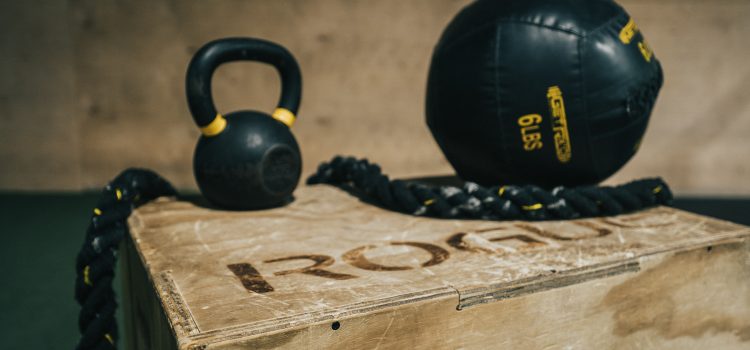
Introduction to kettlebell training
Are you tired of the same old boring workouts? Do you want to shake things up and try something new? Look no further than kettlebell training! This unique form of exercise has been gaining popularity in recent years, and for good reason. Kettlebell training is a full-body workout that combines strength, cardio, and mobility exercises. Plus, it’s fun! In this blog post, we’ll guide you through everything you need to know about mastering the bell and getting into the swing of kettlebell training. Get ready to sweat and feel the burn as we explore the benefits, types of equipment, exercises for beginners, and how to progress with your training. Let’s get started!
The benefits of kettlebell training
Kettlebell training has gained popularity in recent years due to its numerous benefits. One of the main advantages is that it provides a full-body workout, targeting multiple muscle groups at once.
Kettlebell exercises also engage your core muscles, improving overall stability and balance. This translates into better posture and reduced risk of injury in daily activities.
In addition to building strength and endurance, kettlebell training can also improve cardiovascular health. The high-intensity intervals of swinging or lifting kettlebells can get your heart rate up quickly while burning calories efficiently.
Another benefit is the convenience factor – all you need is one or two kettlebells to have an effective workout at home or on-the-go. Plus, they take up less space than traditional weightlifting equipment.
Kettlebell training offers variety in your fitness routine. There are endless combinations of exercises you can do with a kettlebell, ensuring that your workouts never get boring or repetitive.
Incorporating kettlebell training into your exercise regimen can lead to improved strength, agility, balance, cardiovascular health and flexibility!
The different types of kettlebells
Kettlebells come in various shapes and sizes, each designed to cater to different fitness levels and workout styles. Here are the three main types of kettlebells you’ll come across:
1) Cast iron kettlebells – The most common type of kettlebell, these are made from cast iron and have a handle welded onto them. They’re available in weights ranging from 4kg to over 50kg.
2) Competition kettlebells – These are more standardized than cast iron bells and are commonly used for competitions. They’re all the same size regardless of weight, which makes it easier to maintain your technique as you progress through different weights.
3) Adjustable kettlebells – If you want a range of weights without buying multiple individual bells, adjustable ones allow you to change the weight using plates or pins.
When choosing a specific type of bell, consider factors such as your level of experience with training equipment, workout goals and budget constraints.
Kettlebell exercises for beginners
If you’re new to kettlebell training, it’s important to start with exercises that are suitable for beginners. Here are a few great kettlebell exercises to get you started.
The first exercise is the goblet squat. Hold the kettlebell by the horns and bring it up to chest height. With your feet hip-width apart, lower yourself down into a squat position, keeping your back straight and knees in line with your toes. Push through your heels as you stand back up.
Next up is the single-arm kettlebell swing. Stand with your feet shoulder-width apart and hold onto the handle of the kettlebell with one hand. Swing it between your legs then drive through from hips to push it forward until arm is parallel to ground before letting gravity do its work and coming back down again
You can also try the Turkish get-up if you’re feeling more adventurous! Lie on your back holding onto a kettlebell in one hand while extending other arm out at 45-degree angle away from body; bend leg on same side as weight so foot flat against floor but keep opposite leg extended outwards at 45 degrees too.
Remember that form is key when performing any exercise with a kettlebell, so take things slow and focus on proper technique before increasing weight or intensity levels.
How to progress with kettlebell training
Once you have mastered the basics of kettlebell training, it’s time to seek out new challenges and push your limits. Here are some tips on how to progress with kettlebell training.
Firstly, increase the weight of your kettlebell gradually. Don’t jump too fast from one weight level to another as this can lead to injuries or burnout. Instead, aim for a 10% increase in weight after every few weeks.
Secondly, focus on perfecting your technique before increasing the intensity or complexity of your workout programs. This will help you avoid common mistakes that could hinder your progress.
Thirdly, try different types of kettlebell exercises such as swings, snatches, cleans and presses to keep things interesting and challenging. Mixing up your workouts also helps target various muscle groups while preventing boredom.
Fourthly, incorporate interval training into your sessions by alternating periods of high-intensity work with rest periods. This not only improves endurance but also burns more calories than steady-state cardio exercises.
Consider working with a personal trainer who specializes in kettlebell training if you want personalized advice on how best to advance in this field.
Conclusion
Mastering the bell is an achievable feat with enough commitment and patience. Kettlebell training offers a unique way to build strength, improve cardiovascular fitness and burn fat all at once. With the different types of kettlebells available today, there’s no excuse not to start incorporating them into your workout routine.
If you’re new to kettlebell training, it’s important to start with light weights and focus on proper form before progressing onto heavier bells or more complex exercises. Remember, consistency is key when it comes to seeing results.
Mastering the bell takes time but is well worth the effort. By incorporating kettlebell training into your fitness routine regularly and progressively challenging yourself over time, you’ll experience improved physical performance in no time!










